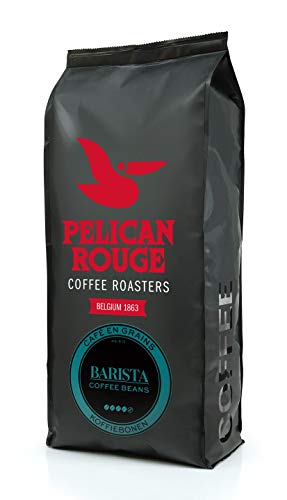Starbucks Coffee Beans 1kg
Before Peppermint Mocha and red holiday cups before the advent of red holiday cups and Peppermint Mocha Starbucks was a cosy cafe in a rainy Seattle. Its founders focused on selling whole bean coffee, but they didn't realize the potential of espresso drinks.
Schultz changed everything. He was determined to showcase his roasting and mixing abilities.
Origin
Starbucks coffee beans have an extended, winding trip before they get to your cup. Coffee is cultivated almost exclusively in the Coffee Belt. This area is located all over the world between the Tropics Cancer and Capricorn. The flavor of coffee beans is affected by the climate, soil, and the culture of the region. Starbucks sources its coffee from more than 30 countries around the globe.
Starbucks coffees are mostly made from Latin America, Africa and Asia-Pacific. These regions are renowned for their full-flavor, balance of acidity and weight. Starbucks also procures coffee from St. Helena in the South Atlantic Ocean, a volcanic tropical island paradise.
Starbucks coffee beans are roasted to perfection for an incredibly smooth and delicious taste. The coffee beans are crushed into a fine powder, and ready to be brewed. The powder is then mixed with water and then poured into a cup, creating an espresso drink that is delicious. The result is a cup full of flavor and energy.
While most Starbucks coffees are blends of different beans, there are many kinds of single-origin varieties available at the stores of the chain. Single-origin coffees from Starbucks offer a wide range of flavors that include sweet and nutty, fruity, and chocolatey. Certain single-origin beans are certified organic.
While Starbucks's beans are sourced from all over the world however, they must be able to meet certain criteria in order to be considered specialty coffee. Specialty coffee first came into use in the 1980s when cafes and roasters began experimenting with lighter roasting and manual methods. Starbucks hasn't yet begun sourcing its coffee with these standards until recently, but has since adopted them.
In addition, to ensure that its beans are grown in a responsible way, Starbucks works to improve the lives of those who grow their coffee. It pays its farmers a premium above market prices and assists them in investing in their communities. It also promotes sustainability, and works to reduce wastage. This has resulted in the creation of new techniques for coffee cultivation and practices that protect the environment.
Roast
Starbucks purchases its beans in large quantities and roasts them in massive quantities. The roasting process takes between 10 and 15 minutes. The end result is that the beans are dark roasted. Darkly roasted beans have a rich flavor, and a full body. The beans are then ground and shipped to stores and supermarkets in the form of a coffee grind. This ground coffee is bitter and is not the ideal choice for making the perfect cup. This is the reason why many people add lots of cream, sugar, flavorings, milk, whipping cream and more to their coffee. It's not a good way to mask the bitterness of the low quality coffee, but it can be an effective way to make the drink more appealing.
The beans begin to steam when they are put in the roaster for the first time because of their internal moisture. Then comes the "first crack", an audible sound that tells us when the actual roasting has begun. At this point the sugars begin to melt and the bound-up water escapes. In look these up of the bean is broken down and oils begin to flow outward from their little pockets. At the end of this phase, most coffees are deemed to be city roasts.
The beans are cool and then separated from any stones, or other impurities, which may have escaped from the roaster. They are then inspected by hand before being bagged and sold. Some beans have a dark spot, which is known as"quaker. These beans didn't change color and taste burned. This is a typical phenomenon, but it does not necessarily mean that the coffee is bad.
The beans are usually roast in small batches Sometimes as little as 20 pounds. These are known as "micro-lots". This is because every coffee will be roasted with specifications developed by a group of coffee masters from Starbucks headquarters. special info of coffee masters designs profiles that are used in all Starbucks(r) roasting facilities, around the globe. These profiles ensure that each cup of coffee is consistent and has a certain degree of aroma, body and flavour.
Flavor
Starbucks purchases their beans directly from the farm on which they are grown in order to help improve the quality of their coffee and ensure ethical sourcing. For every pound of coffee beans sold, Starbucks plant trees. The beans are not branded with their origin, but certain blends are. Veranda is from Sumatra; Komodo Dragon is from Indonesian; and Anniversary is a mix between centeral american and African beans. The beans have a unique taste profile and create a smooth cup with a delicate blend of sweetness and smoothness. Every sip is a feast of symphony flavors that leave a pleasant taste on the palate.
Weight

The weight of Starbucks coffee beans 1kg varies based on the kind of blend. A Starbucks House Blend, for instance, weighs 14 oz per pound. Walmart's pound of Espresso Roast beans weighs 16 oz. This is equivalent to an increase of 67% at Starbucks compared to Wal-Mart.
Starbucks' Pike Place Roast was named after Seattle's famous marketplace. Its medium-light roast gives balance, sweetness, and smoothness in each cup. Blended using beans from Latin America, this blend is ideal for Americano and espresso. This gourmet blend comes with a FlavorLock package to protect the coffee and for flavor preservation. This is Starbucks the classic signature coffee. This is a fantastic choice for those who love coffee! Made from 100 percent Arabica beans. A wonderful gift idea for all Starbucks fans.
